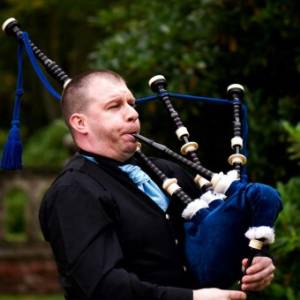Home Castle, Hume
1214
The lands of Home or Hume were first granted to Ada, his daughter, by the 6th Earl of Dunbar & March; she married her cousin William of Greenlaw, whereupon he became known as William of Home sometime before this date. It is the original seat of the Home family from which they take their name. It is an example of one of the earliest castle types in Scotland with a rectangular courtyard plan, unusual in the South, being more often found in the West Highlands. From its earliest times it was a beacon station for warning of invasion from England. It was the only Borders castle not destroyed in Robert Bruce's scorched earth policy in 1313 .
1460
King James II of Scotland and his queen, Mary of Gueldres, were staying in the castle during the siege of the English-held Roxburgh Castle, during which the king was killed by the gun (sited nearby present day Floors Castle) which exploded as he set the fuse.
1547
The Duke of Somerset captured Hume despite its defences having been strengthened by the French. The 4th Lord Home recaptured it the following year, putting the garrison to death; it was then used for the storage of captured English guns.
1569
Hume was taken again by the Earl of Sussex and burnt, following the 5th Lord Home's renewed support of Mary Queen of Scots.
1651
Colonel Fenwick attacked the castle on behalf of Oliver Cromwell and the artillery bombardment reduced the castle to a ruin.
1789
Following the sale of the barony of Home by the Earl of Home to Sir Hugh Hume of Polwarth, 3rd Earl of Marchmont, the castle walls were re-constructed in their present form, the original 13th century portions being still visible in part.
1804
Hume was still a beacon station warning for invasion, now from Napoleon. On the night of 31st January a serjeant of the Berwickshire Volunteers in charge of the beacon mistook charcoal burners' fires on Dirrington Law for a warning and firing his at Hume, set in train the lighting of all the Borders beacons to the West and a turn-out of 3,000 volunteers in what became known as 'The Great Alarm'.
1929
The castle and surrounding land was bought by the Secretary of State for Scotland, it having been previously sold from the Marchmont Estate before the 1914-18 war.
1930
The Berwickshire Naturalists Club placed a viewfinder on the South West ramparts for the enjoyment of visitors and to celebrate their centenary.
1985
The Berwickshire Civic Society became tenants and took on the task of administering funds provided by the Scottish Office for the restoration of the castle walls ' the castle having been closed to the public since the early 1980's. The castle was re-opened to visitors in 1992 and the Society became outright owners of the castle in 1995.
2005
Ownership of the castle returned to the Humes after an interval of approximately 100 years, when it was acquired by the Hume Castle Preservation Trust, sponsored by the Clan Home Association.

Comments
Sign in or get an account to comment.


